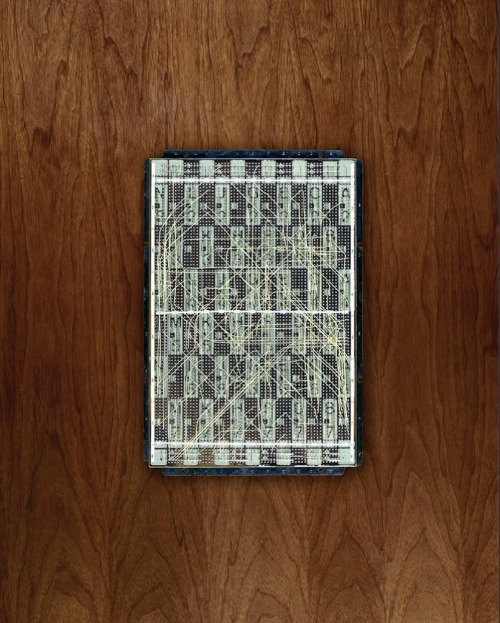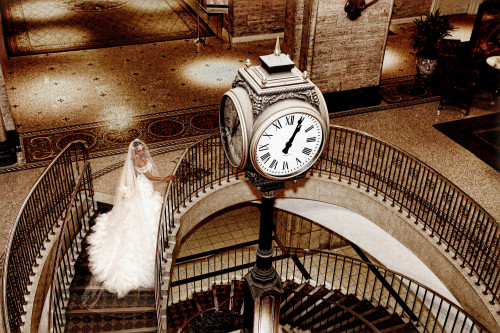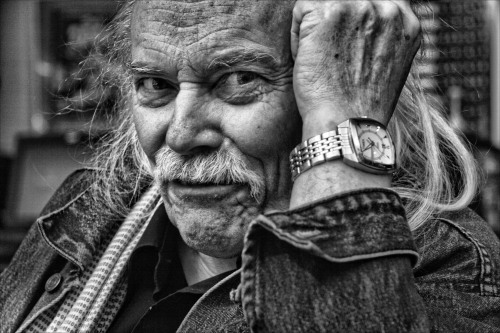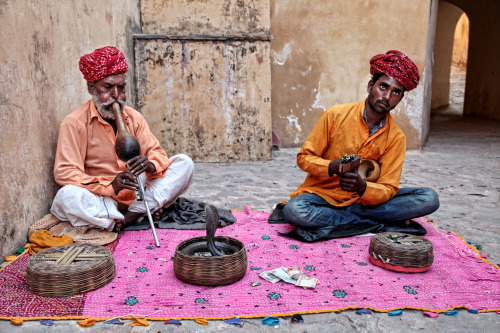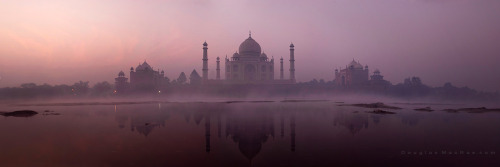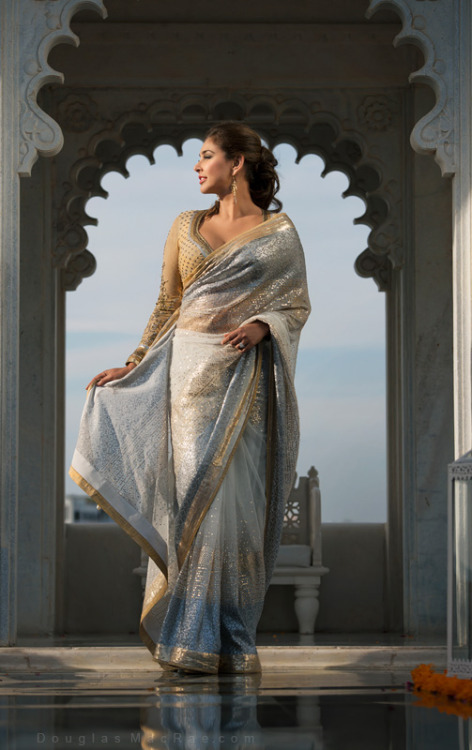#theregulars








The Regulars: An Interview with Nick Spector
Photographer:Nick Spector
Studio: Nick Spector Photography
Type of Photos Taken: Fashion, Street
Tell us a bit about yourself…
I’m Toronto-born and raised. I’ve been shooting for five years. I studied journalism at Ryerson. The photojournalism instructor at Ryerson, Peter Bregg, taught me everything about photography. Thanks to Peter, my first photo job out of school was shooting a fundraising climb up Mt. Kilimanjaro.
After that, I did lots of corporate and event jobs, but still craved something more creative.
I hit the reset button on my photography career two years ago; I took a continuing education fashion photography course at OCAD, taught by FASHION Magazine’s photo editor Erin Reynolds. We kept in touch, and a few months after the class, I reached out to ask if she knew any photographers looking for assistants. I figured it was a long shot. After all, I didn’t have much of a portfolio and no experience assisting. She recommended I get in touch with Chris Nicholls. I did, and I’ve been one of his assistants for about a year now. I’m totally using this platform to shout him out and show appreciation. I’ve learned so much from him and his whole team over the last year. They’ve all been really patient and helpful with me. It’s an incredible opportunity to get to be there and not one I take for granted.
What drew you into photography?
I always say that I wish I had one of those “I picked up a camera at five years old/this was destiny” type of stories. I was drawn to cameras at Ryerson. We had these broadcast news classes and they made you get into groups and either be a reporter, writer, editor or camera operator. I liked being a reporter, but I found camera work more creative and meditative (I also really hated writing for TV!). I remember playing with my friend Pedram’s DSLR at a party once, and wanting desperately to know how to use it properly. I was trying to take someone’s picture but I couldn’t get the photo to look like the lighting I was seeing in front of me. I remember feeling like I needed to master this. It became an obsession: seeing a moment of a scene and wanting to be able to capture the elements of it to evoke a mood or a feeling.
What is your philosophy regarding photo taking? Any personal rules you stick to?
There are politics to everything you shoot.
To me it goes beyond the baseline “respect your subject.” As someone who shoots human subjects primarily, I believe that you should understand your subject; understand that beyond depicting who theyare, you are also creating a visual representation of a sex, gender, identity, race, ethnicity, religion, etc.
That has the potential to be very impactful to your viewer, especially now that a majority of us are sharing our work online. We don’t know who is seeing it, or how they’re interpreting it. I think that it’s important to remember that. There’s a story beyond the photo, but the photo also shapes that story. I think the same set of rules can apply to photographing a city, a place, nature, everything.
I can’t say that I always (or ever) do a perfect job of it, but I think it’s something that is of absolute importance to strive for.
Other than that, I really believe in that idea that the best camera is the one you have on you. If you understand the strengths and limitations of the tool you’re using, you’ll always get good
results.
Tell us about a photographic challenge?
I guess the root is fear. Fear of never reaching the calibre of photographer I want to be. Fear that what I’m doing isn’t good, or isn’t good enough. Fear that I won’t “make it,” whatever making it means.
For a long time, I was looking at photography as a business. My roommate Lily had to berate me into referring to myself as an artist instead. She made a fair point, that by not doing so I wasn’t taking any realresponsibility for the work I was producing.
The satisfaction that I feel from work I produce is short-lived. I’m definitely very critical of myself. Those fears I mention are all still very prevalent. I’ve learned to just embrace it. Behind it all is an intense love for this art form. Rather than let my own criticisms get me down about what I’m doing, I try to recognize the passion fuelling it and harness that energy into creating the kinds of images I want to make.
What is one thing you could not go into a shoot without?
Inspiration. You can spend thousands and thousands of dollars on gear but if you don’t know what you really like, what moves you, what excites you, if you don’t know where you want to go and where you want to take the viewer, you’ll always come up short. I try to look beyond photography for inspiration. Paintings, music, my own life experiences - all that stuff gets weaved into the work I do.
What gear do you prefer to shoot with?
Like I said earlier, hand me a camera, let me figure out its functions and feel; what it can and can’t do; and I’m happy.
I know that’s not the answer you’re looking for though…
A majority of my fashion work is shot on a Nikon D800 and 85mm lens. Almost all of my street photos were shot with a Fuji x100T. All bought at Downtown Camera. I just did a trade-in with you guys for a used Nikon F80, I’ve been playing around with shooting some of my fashion stuff on film.
When did you first come to Downtown Camera? Anyone in particular you remember?
I don’t remember the first time I was there, but I do remember coming in to buy an Elinchrom lighting kit, and John told me to wait a month for the newer kit to come out. He emailed me when it came in and everything. From that point on I’ve been a loyal customer.
George has always been very kind and helpful with me (and he takes great passport photos!). Sheldon helped my mother pick out a point-and-shoot. I don’t know everyone’s name there, but
they’ve always been really nice and super helpful. I follow a couple of them on Instagram.
Any advice to fresh photographers?
Stop looking at the back of your camera after every shot. Take one test to make sure the light is
right and then focus on shooting what you’re shooting.
Don’t give up. Ever. No matter what. If you feel discouraged, embrace that and get better.
Buy photo books.
Study light. Just watch it throughout the day. Be aware of it. Think about how it makes you feel: the thoughts, memories, and ideas it conjures. Use that.
No but seriously, don’t ever give up.
Follow@nickspector on Instagram.

The Regulars: An Interview with Chris Thomaidis
Photographer: Chris Thomaidis
Studio / Company:Chris Thomaidis Photography
Type of Photos Taken: Portraits, Location, Still Life for corporate and editorial clients
Tell us a bit about yourself…
I was born in Northern Greece and have lived in Toronto since the age of four. I remember very little of my childhood. My sister describes me as a quiet and contemplative toddler. They would leave me under an olive tree in the village square, where I happily played and observed for hours. Nothing has changed, except for the type of tree. I started photographing professionally 34 years ago. I was a creative director for a few years in the 80’s. Had stock photo representation through a local agency, then with Tony Stone Images which morphed into Getty Images in the early 90’s. I continue to pursue commercial work and have been fortunate enough to work with exceptionally creative people.
What drew you into photography?
In high school I was hoping to become an architect. When I was 21 a friend and I went on a weekend motorcycle trip. I borrowed my brother-in-law’s camera, a Canon ftb loaded with a roll of colour negative film. I didn’t know how to use it. He showed me how to focus and match the needle for exposure. It was fun. A few years later I lived with artist friends north of Toronto. It was with their encouragement that I started photographing on purpose.
What is your philosophy regarding photo taking?
Even when I don’t have a camera with me, I still look at the world as though I’m looking through one. It’s the way my eyes are connected to my brain. I can’t turn it off. More an artistic illness than a philosophy.
Any personal rules you stick to?
Always be prepared and relax.
Tell us about a photographic challenge you overcame?
I just liked taking and looking at pictures and had very little interest in the physics or mechanics of photography. It took quite a few years for me to understand the basics. Once I understood them, they became second nature.
What is one thing you could not go into a shoot without?
A second camera.
What gear do you prefer to shoot with?
I have owned and used every format from 127mm to 4x5. Early in my professional career, my main kit was four Canon F1s and every Canon lens from 14mm - 300mm. Today I use Canon Dslrs, 1Ds3 & 5D3 and for the first time ever, a zoom lens. 24 -70mm being my go to lens. Oddly enough, 75% of the images I shoot are taken in the 35 - 55mm range. I could probably get by with a fixed 35mm lens. Favourite camera ever was the Mamiya RZ Proll with a 110mm.
When did you first come to Downtown Camera?
Many years ago, when Mike and Mary were proprietors on Victoria Street. You never just bought something from them, you learned something new every time you walked into the store.
Any advice to fresh photographers?
The more you shoot, the clearer becomes the reason you take photographs. Be ruthless when editing your work. Be inspired, not just by photography but by everything around you. Earth is a pretty amazing place.
Post link
The Regulars: An Interview with Cameron MacMaster
Photographer: Cameron MacMaster
Studio / Company: Froz’n Motion Photography
Type of Photos Taken: Wedding, Engagement, Boudoir, Maternity, Newborn, Family, Travel, Cityscapes
Tell us a bit about yourself:
My name is Cameron and I was born and raised in Kamloops, B.C. I’ve been involved in photography pretty much my entire adult life and, as far back as I can remember, I’ve always been making pictures.
My one, single goal in life, growing up as a child, was to get out of Kamloops as quickly as I could and see the world. I did this by involving myself in activities I thought had the potential of achieving my goal. I played rep hockey, studied Judo, Karate and Gung-Fu, was a semi-professional kickboxer for a while before stumbling into the world of dance. And dance, it turned out, was my ticket out. I spent the next 20 years as a professional modern dancer, moving first to Vancouver then all the way across the country to Toronto and Montreal, working with amazing dance companies and touring all over the world performing.
And through all of that, photography has always been the one thread that has woven its way consistently through the entire course of my life. Whatever I’ve done or wherever I’ve gone, I’ve always packed my camera along with me.
What drew you into photography?
When I was around 17, a group of friends decided to take the overnight Greyhound from Kamloops to Vancouver during a particularly hot spell in the B.C. interior, arriving in the great coastal city around 7am. With nothing to do and no place to go until the concert that evening, we did what any teenager from a small town in Canada would do, unsupervised in the big city; we went to the English Bay to look at pretty girls.
For some reason one of my friends wound up with his brother’s SLR film camera, which none of us had a clue how to use, but which, suddenly, became the perfect instrument to overcome our shyness and actually talk to the girls on the beach. Well it worked. We told everyone we clicked that we were working for some famous fashion magazine and no one questioned us or called the police. I remember thinking when it was finally my turn to become the “photographer,” “Hey, this feels right…” Well, my friends all ended up with pocketfuls of names and phone numbers, but I wound up an unquenchable desire to take photographs. I bought my first film camera, a Canon AE-1, not long after that and I’ve never looked back since.
What is your philosophy regarding photo taking? Any personal rules you stick to?
My philosophy regarding photo taking is just do it. Set your camera to Manual Mode and get out there and shoot the best images you can. Inspire and impress yourself. Challenge yourself to come up with better images. Always carry your camera with you and have it ready to pull out in an instant. Don’t worry about what people around you might think of you, just get in there and shoot. Every place you go, no matter what the time of day or night is an opportunity to find something to shoot and a way to grow as a photographer. As long as you continue to refine your ability to take better images, you are on the right path.
Tell us about a photographic challenge you overcame?
I think the biggest challenge every photographer must overcome is getting it right – whether it’s the exposure or the composition or the timing. Once I figured all of that out, my biggest personal challenge, being a particularly shy person, was coming out of my shell and teaching myself how to interact with, and direct, my subjects – especially large groups, like wedding parties. That was tough.
What is one thing you could not go into a shoot without?
Confidence, and the ability to think fast and improvise. Every shoot you go into is going to challenge you on some level. No situation is going to be perfectly ideal. It could be problems with lighting and location, or physical challenges with the people you are shooting. Whatever the issue is, you need to be able to think on your feet and find a way to make it work. If someone is paying you to shoot their wedding or their engagement, or whatever is you are getting paid to shoot, you’ve got to get in there and create images that not only your clients will fall in love with, but that you are proud of, too, regardless of what is going on all around you.
What gear do you prefer to shoot with?
I’ve always been a Canon user and always will be – until I win LotoMax, then I will become a Hasselblad shooter (My fingers and toes are crossed…) But until then I shoot with a 30D, a 50D and a 5D Mark II.
When did you first come to Downtown Camera? Anyone in particular you remember?
I first came to Downtown Camera in the spring of 2004. The first person who helped me, and helps me to this day, was John (don’t know his last name). He was always knowledgeable and friendly with a deep understanding of the business of photography. And recently, an old friend from way back joined Downtown Camera and I am thrilled that he is there – and that, of course, is the indefatigable Patrick Ng!
Any advice to fresh photographers?
My advice to anyone serious in pursuing a path in photography is to, first off, assess where you are and where you would like to go; are you happy just clicking shots of your family or your pet dog, or do you want to get more serious with it? Do you enjoy travel photography but shelve your camera the minute you get back home and unpack your bags? Or do you think to yourself as you are out there clicking away that, “Yeah, I can do this. This feels right…” And you know in your bones that this is the art form, or the creative outlet, you’ve been waiting for your whole life. If that’s the case, then go for it. Take yourself seriously. Develop a marketing strategy to get your work seen. Constantly check out other people’s work and get inspired. Get on YouTube and watch videos. Take courses. Ask questions and learn whatever you can. Photography is an ongoing learning process. Your task as a photographer is to never stop learning and improving the quality of your work.
Post link
The Regulars: An Interview with Douglas MacRae
Photographer:Douglas MacRae
Studio / Company: Douglas MacRae Ltd.
Type of Photography: Travel, Motorcycle, Art
Tell us a bit about yourself…
I graduated from OCAD in ‘89 from Communication and Design. While still in college, I hooked up with HMV records and wound up painting super-realist murals in their record stores around the world based on my photo shoots. This evolved into advertising photography and super realist illustration work including some award winning billboard campaigns for President’s Choice and editorial work in Esquire magazine etc.
I went through a brief oil painting phase, painting two 20 ft. wide Pre-Raphaelite style oil paintings for the Liberty Grand building in Toronto and a series of six murals in London, England.
I moved much more into pure photography after this, shooting on five trips to India, twice to Nepal, twice to Bhutan, Tibet, Myanmar, Cambodia, Italy, Tunisia, Morocco etc. There are permanent installations of my photography at the Cibo and Spice Route restaurants, both on King West for those in in Toronto.
Being a motorcycle racer myself (I am a two time AMA Grand Vintage Racing Champion and won at Daytona, Mid-Ohio and Mosport), I fell into shooting bikes as well and just recently had a feature with all my photography in the April issue of Cycle World magazine. I still race and will be out there this summer despite having some bad crashes, three in 2009 including a 130 mph get off at Daytona; the worst crash was actually later that year racing in Alabama and I ended up having a new operation where they stripped ligaments off the hamstring in my leg and used it to rebuild my shoulder.
What drew you into photography?
I used to set up elaborate shoots for my painting and illustration reference, all shot on my Mamiya RZ67 format film camera. As the art waned the photography grew and I joined the digital onslaught.
What is your philosophy regarding photo taking? Any personal rules you stick to?
Must create depth.
Tell us about a photographic challenge you overcame?
I seem to have some back luck with drivers on photo trips- in India I almost got decapitated in a car wreck coming back from shooting at the Taj Mahal when my driver drove under the back of a stopped 18 wheeler flatbed truck which came through the windshield.
I almost got lynched by an angry mob in rural Nepal when it seemed like my driver ran down an 8 year old boy who was bleeding from the head; the police saved us by ushering us into a fortified compound (turns out the police chief’s wife saw the incident and the kid fell in front of the car which did not touch him, nevertheless we drove him to hospital in Kathmandu and he was fine).
I was almost arrested by secret police in Tunisia during the Ben Ali dictatorship after trying to surreptitiously photograph one of his leather clad secret policemen.
In Italy I almost got sucked into the ocean after being dropped by boat on breakwater rocks in Cinque Terre where I waited until dark til I got the nice picture- then I had to climb back alone at night through the surf pounding on the huge rocks.
I almost slipped down a rock slope into a gorge shooting the Turquoise lake in Tibet and did fall down a rock slope shooting in Ladakh, NW India near the border with China while trying to take a picture of a Yow (half Yak half Cow)- I smashed my 70-200 lens against a rock as I half cartwheeled down the crazy steep slope- it didn’t zoom so good after that and later required a $900 repair.
What is one thing you could not go into a shoot without?
My one thing is shooting with two bodies, I just couldn’t go back- I love being able to quickly pull out the short or long lens with a wide angle waiting in my bag. I also don’t go anywhere without my Kata bag and I can squeeze a crazy amount of gear in it. I like to watch the face of the person operating the x-ray machine at the airport as they sort of blink at the dense mass of lenses, flashes, Pocket Wizards and bodies jammed into my bag.
What gear do you prefer to shoot with?
I am a NIkon man and just love walking about with my D810 and my 70-200 f2.8, I love that lens and that body. I keep everything portable with six Speedlights on Pocket Wizards with a beauty dish or an octabox and a bounce.
When did you first come to Downtown Camera? Anyone in particular you remember?
John Witcher always takes care of me and makes sure I don’t leave the store with something I don’t need.
Any advice to fresh photographers?
Get up early. The good light is at dawn.
Post link





